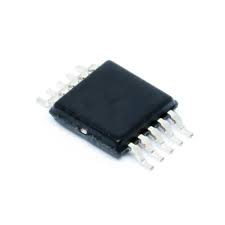TPS92513HVDGQR
Part Number: TPS92513HVDGQR
Manufacturer: Texas Instruments
Description: EVAL BOARD FOR TPS92513
Shipped from: Shenzhen/HK Warehouse
Stock Available: Check with us
ICRFQ.com - Electronic Components Distributor in China Since 2003

Part Number: TPS92513HVDGQR
Manufacturer: Texas Instruments
Description: EVAL BOARD FOR TPS92513
Shipped from: Shenzhen/HK Warehouse
Stock Available: Check with us
| Datasheet | |
|---|---|
| Category | Integrated Circuits (ICs) |
| Family | PMIC – LED Drivers |
| Manufacturer | Texas Instruments |
| Series | – |
| Packaging | Tape & Reel (TR) |
| Part Status | Active |
| Type | DC DC Regulator |
| Topology | Step-Down (Buck) |
| Internal Switch(s) | Yes |
| Number of Outputs | 1 |
| Voltage – Supply (Min) | 4.5V |
| Voltage – Supply (Max) | 60V |
| Voltage – Output | 65V |
| Current – Output / Channel | 1.5A |
| Frequency | 100kHz ~ 2 MHz |
| Dimming | Analog, PWM |
| Applications | Lighting |
| Operating Temperature | -40°C ~ 125°C (TJ) |
| Mounting Type | Surface Mount |
| Package / Case | 10-TFSOP, 10-MSOP (0.118″, 3.00mm Width) Exposed Pad |
| Supplier Device Package | 10-MSOP-PowerPad |
The world of lighting has witnessed a remarkable evolution, with Light Emitting Diodes (LEDs) emerging as the cornerstone of modern illumination solutions. These energy-efficient and long-lasting sources of light have transformed industries, from automotive to consumer electronics, by offering unprecedented levels of brightness and versatility. At the heart of these innovations lies a critical component – the TPS92513HVDGQR high-current buck regulator.
The TPS92513HVDGQR is more than just an electric part; it makes it possible to use LEDs in cutting-edge ways. As a high-current buck regulator, it is made to drive high-brightness LEDs efficiently and effectively, making it an important part of getting the best lighting performance. This regulator has a number of traits that make it well-known in its field:
Key Features
MOSFET Built-In for Driving High-Current LEDs: The TPS92513/HV LED driver has a MOSFET built-in, which makes driving high-current LEDs easier. This integration makes the circuit more efficient and makes it easier to build.
Fixed-Frequency Operation with Control of Peak-Current Mode: The LED drivers work in a fixed-frequency mode with control of peak-current mode. This makes sure that the line and load conditions are regulated in a stable and accurate way, which helps LEDs work the same way every time.
The TPS92513/HV LED driver has two different dimmer inputs: analog and pulse width modulation (PWM). This makes it easier to control the brightness. These choices give you more control over how bright the screen is, with contrast ratios of over 10:1 for analog dimming and over 100:1 for PWM dimming.
To keep the brightness and efficiency of LED lighting systems consistent, the current and voltage must be carefully controlled. Here, buck regulators really shine. Buck controllers have several benefits when used with LED lighting:
The TPS92513HVDGQR enables:
These dimming options empower designers to create captivating lighting and tailor energy usage for specific needs.
Analog dimming changes the brightness of an LED in a smooth way by changing the output voltage with a steady control signal. This method allows for smooth changes between different levels of brightness, making the image look better and giving it more uses.
The TPS92513HVDGQR utilizes analog dimming for precise LED brightness control:
Continuous voltage adjustment in analog dimming makes sure that changes in brightness are made slowly, which is important for creating nice lighting effects. Analog dimming on the TPS92513HVDGQR lets creators create lighting experiences that are both immersive and unique.
The TPS92513/HV LED driver is a huge step forward in LED lighting technology. With its built-in MOSFET, dual dimming choices, microcontroller compatibility, and support for multi-string applications, it has a lot of advanced features that make it useful for a wide range of lighting applications. The TPS92513/HV LED driver is set to change how high-current LEDs are driven and controlled, whether it’s to get the best brightness-contrast ratios or to make sure that safety mechanisms work well. It works very well, can be changed, and has a lot of features. This makes it a great choice for engineers and designers who want the best LED lighting options.
Contact ICRFQ, China’s top seller of electrical components, for more information and to place an order. Find out how you can use the TPS92513HVDGQR to make better decisions in study, energy management, and other areas.
WhatsApp us